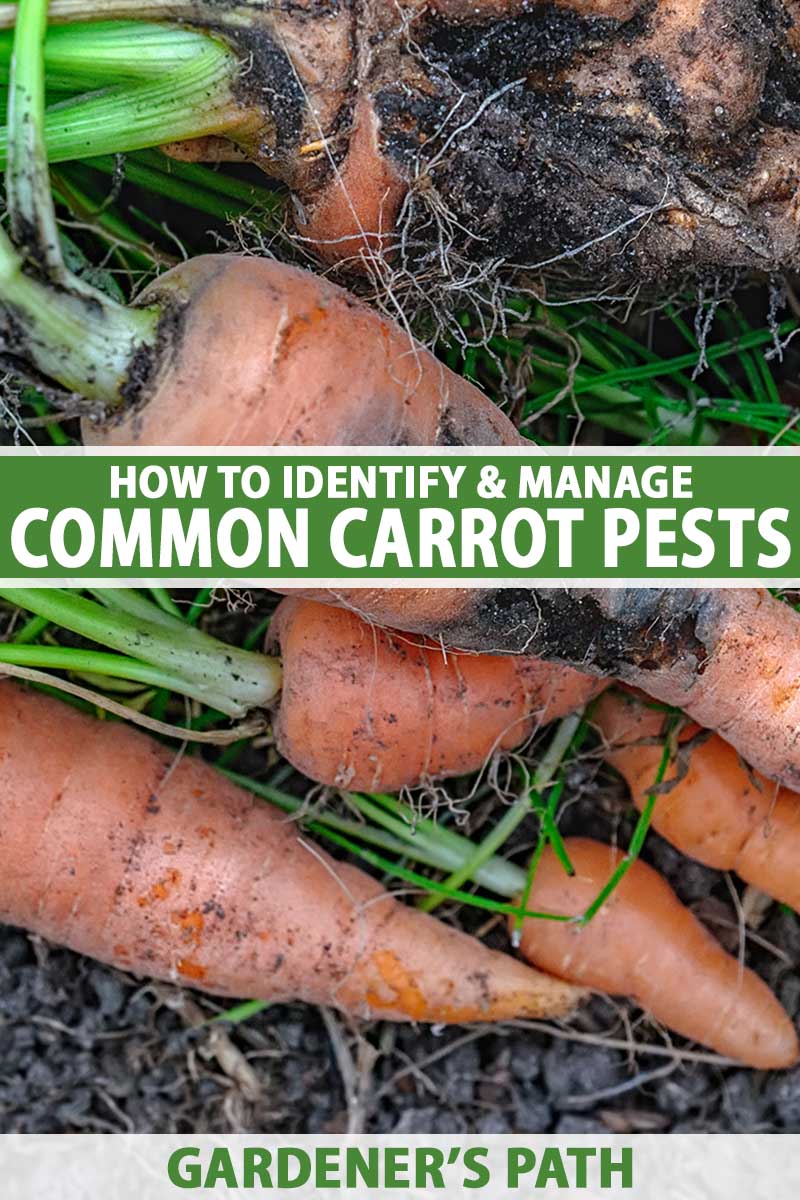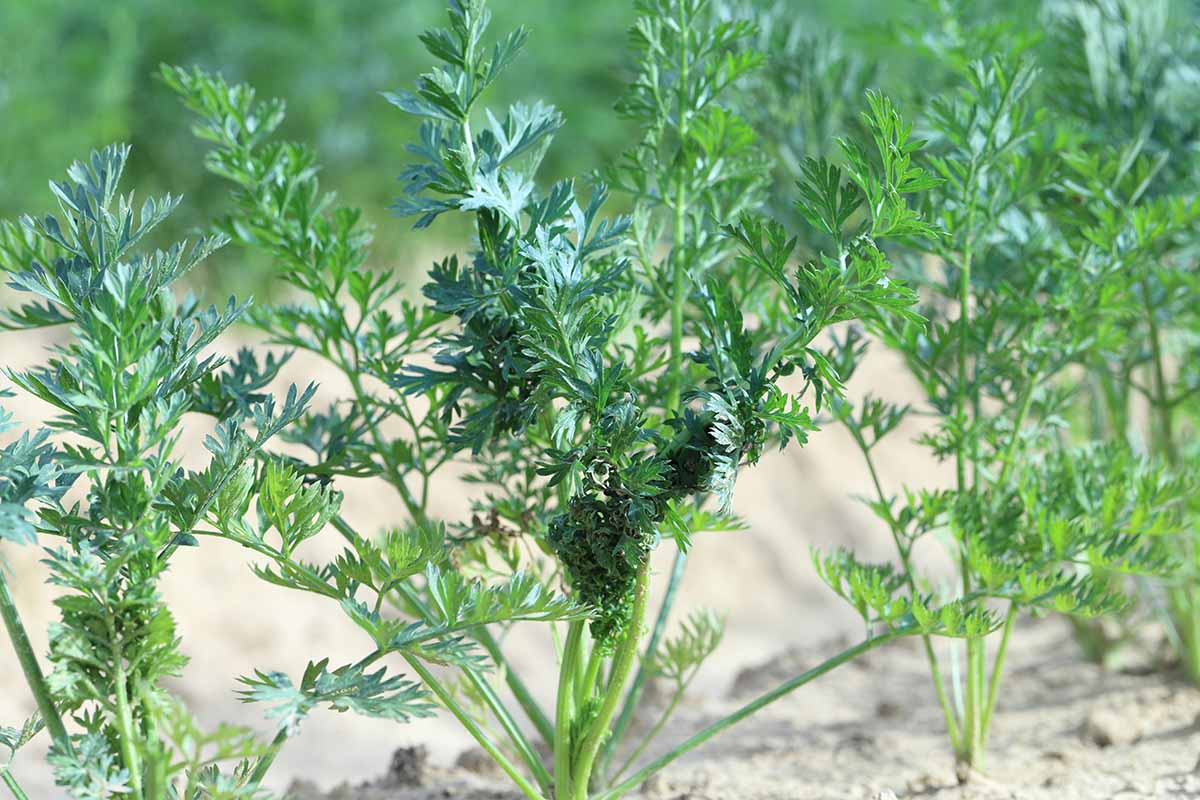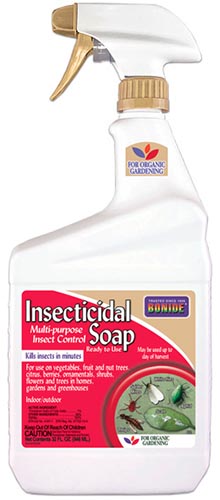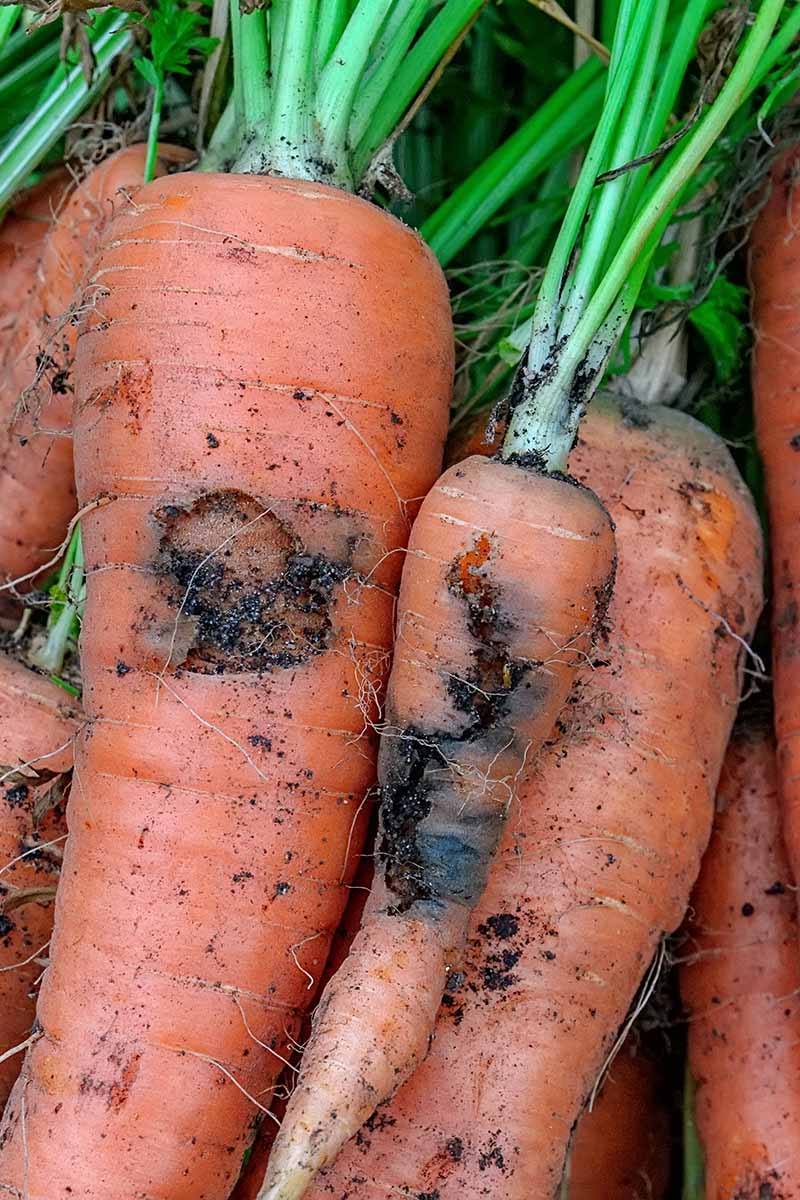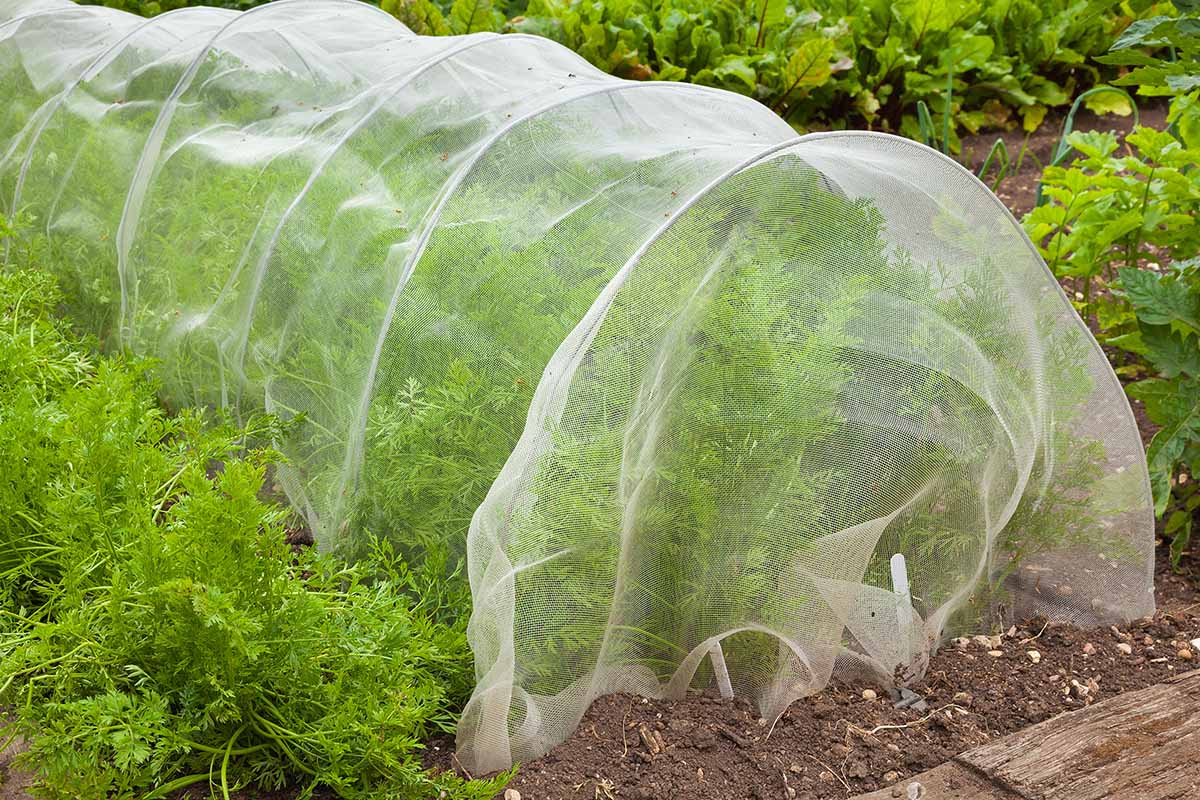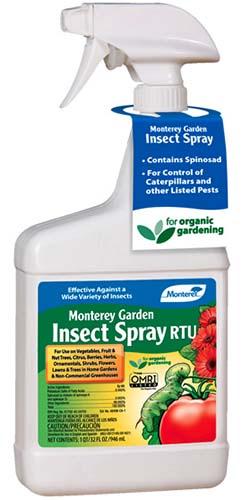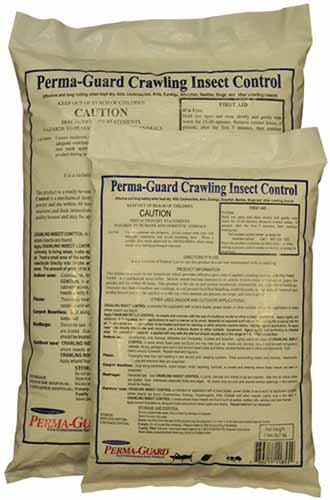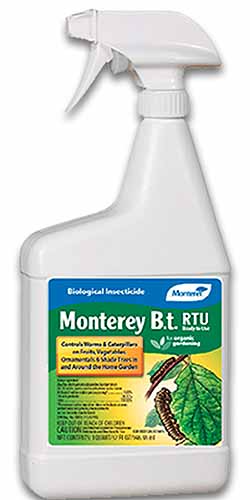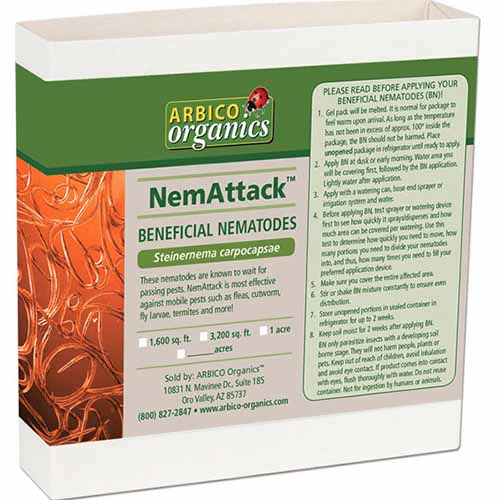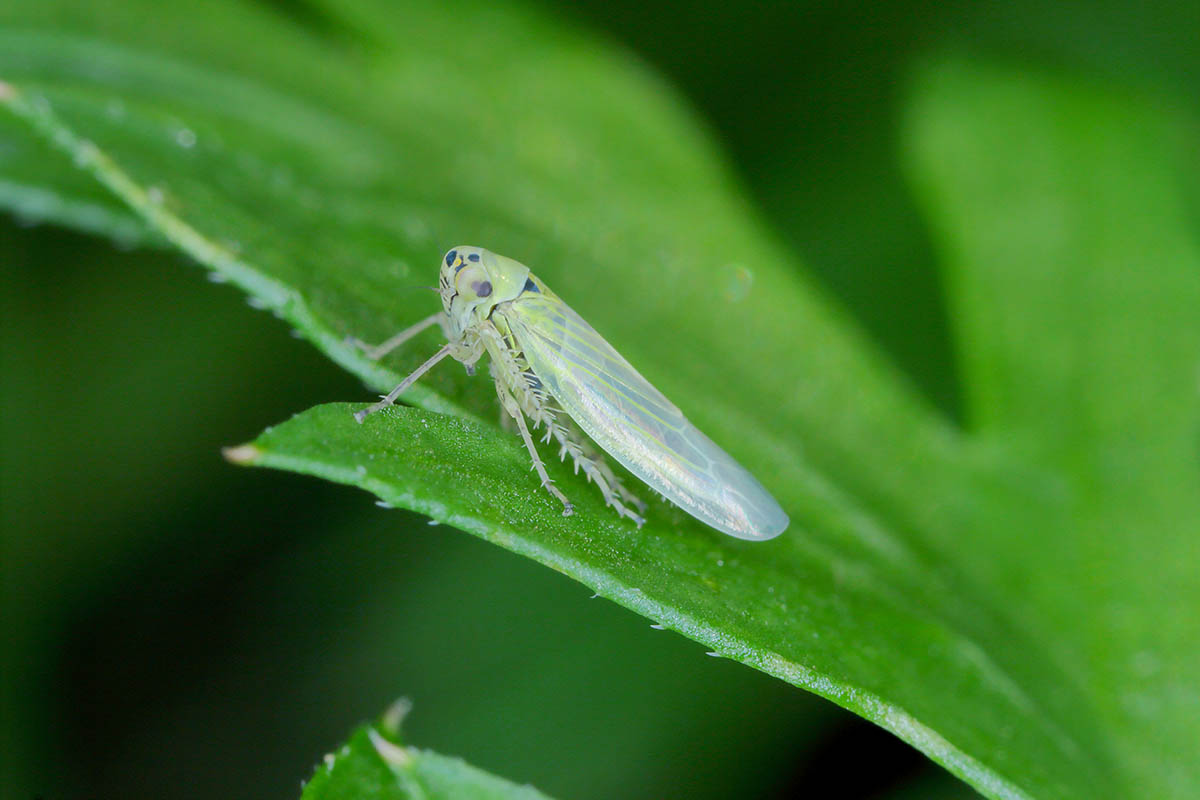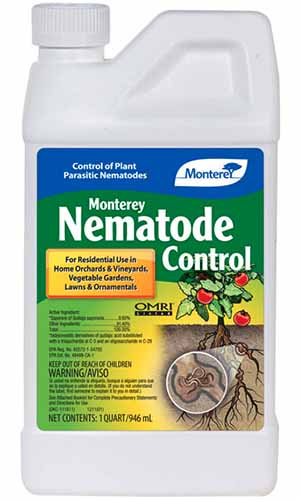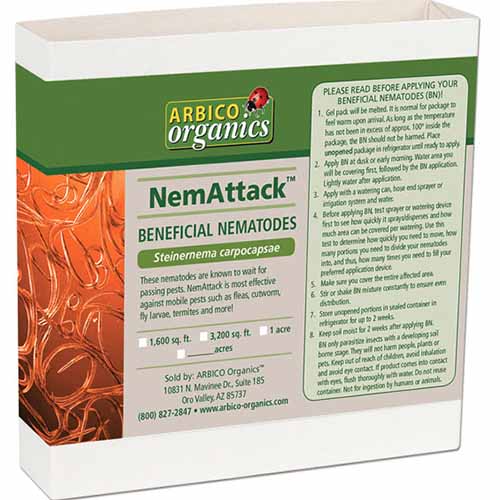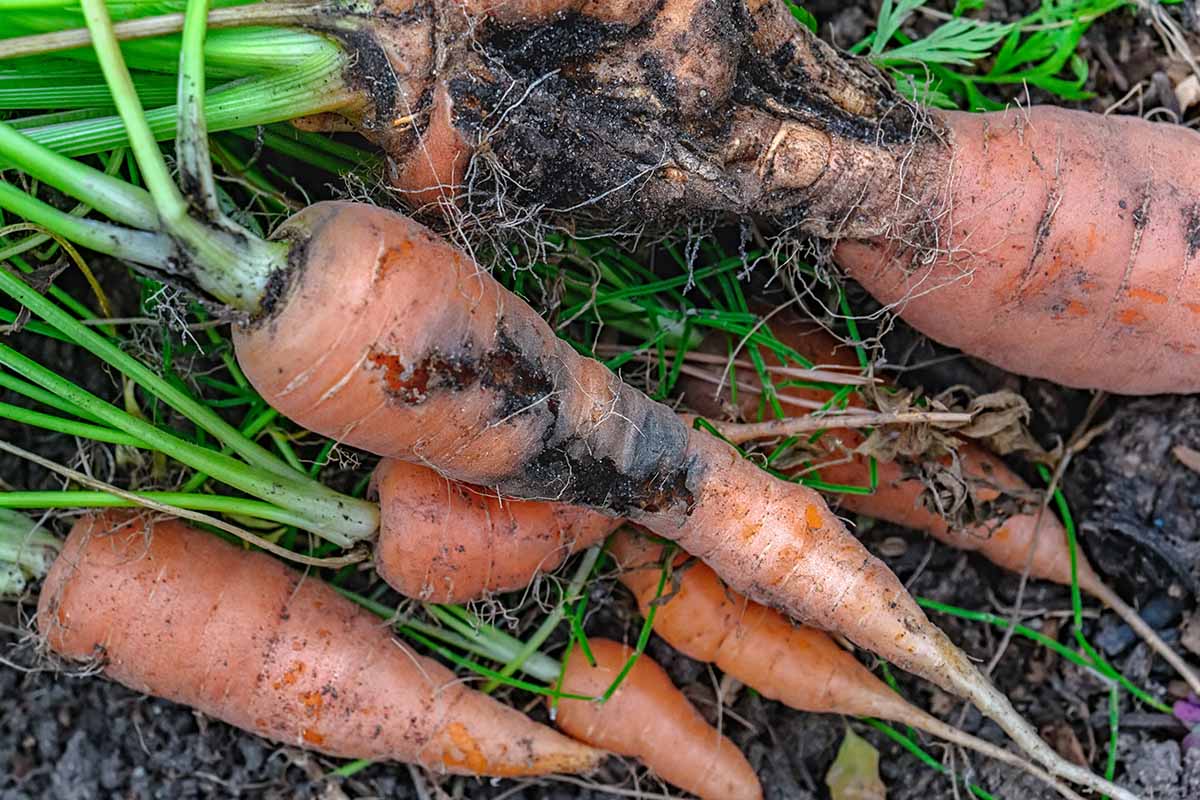If only it were that simple. We link to vendors to help you find relevant products. If you buy from one of our links, we may earn a commission. Luckily, we’ve got everything you need to know about what pests might attack your carrots, including how you can deal with them! Here’s what we’ll cover:
1. Aphids
Are there any plants aphids don’t attack? There are a variety of aphid species that will suck on carrots, including melon aphids, willow carrot aphids, and green peach aphids.
2. Carrot Rust Flies
Psila rosae are four- to five-millimeter-long, dark colored, yellow-legged flies that lay eggs in the soil near carrots and other members of the Umbelliferae family. Ladybugs and lacewings are your friends when it comes to aphids, because these two beauties love to chow down on the suckers. Bonide Insecticidal Soap Insecticidal soaps – such as Bonide Insecticidal soap, available at Arbico Organics – can be effective against aphids, and if applied correctly, are generally safe for the beneficials that may visit to feast. When they hatch, the larvae are small, one-centimeter-long maggots that feed on the root hairs and rootlets, entering the root itself after their third molt. They leave surface scars mainly on the bottom two-thirds of the roots. Once mature, they pupate in the soil. Several generations of these pests can occur each year. Monitor for the adult flies with sticky traps, and use row covers to protect the plants before eggs are laid. Often, the first indication they’ve been tapping into your plant is the development of the disease they vector: aster yellows. Insecticides are rarely recommended or needed for home gardens. Monterey Garden Insect Spray Try spraying a Spinosad product such as Monterey Garden Insect Spray, available at Arbico Organics, on the plants if you notice larvae. Find more information on identifying and combating carrot rust flies here.
3. Carrot Weevils
Small, dark-colored beetles and white, C-shaped grubs with a yellow-brown head are one of the last things you want to see hanging around your beautiful carrot plants. The females of this weevil, Listronotus oregonensis, attack at the first true leaf stage, laying eggs in small cavities they chew into petioles and crowns. The larvae chew tunnels in the upper third of the root (unlike the carrot rust fly described above) and nibble for three weeks before pupating in the soil. Two generations can occur per year. If you pull up the roots and see zig-zagging, dark-colored grooves on the upper portion, you’re likely dealing with carrot weevils. Monitor for this pest by putting carrot slices on the soil starting at seeding time, and watch for larval feeding. This pest overwinters in plant debris, so cleaning up after the season is over is imperative. Since they pupate in the soil, beneficial nematodes can be very effective in preventing future infestations. NemaSeek HB Make sure the product you choose contains the nematode species known as Heterorhabditis bacteriophora, such as what you’ll find in in Nema Seek Hb Beneficial Nematodes available from Arbico Organics. Read more about identifying and controlling carrot weevils here.
4. Cutworms
While seedlings are getting established, cutworms can be an issue. These caterpillar larvae roam the garden at night and will chew through the stems, often at ground level. During the day, they can be found hiding in the soil a few centimeters from the plant. To find them, dig in the soil around the plant and look for fat, soft, and curled brown or gray larvae. Control surrounding weeds to prevent a cutworm invasion, since cutworms will often shelter in and feed on weeds before they move on to your precious carrots. They happen to love grass too, so leave a grass-free border around your carrot beds or patch. In the fall, work the soil to expose the juvenile pests to birds. Or you can handpick the larvae at night after watering or rainfall. Better yet, let your chickens do the work for you once you’ve harvested! You can create a barrier around your plants by spreading a layer of diatomaceous earth around the base of each seedling. Perm-Guard Crawling Insect Control Perm-Guard Crawling Insect Control, available at Arbico Organics acts as a fatal fence for combating crawling insects. Monterey Bt Liquid Bacillus thuringiensis products – such as Monterey Bt Liquid, available from Arbico Organics – are also effective. You can also apply beneficial nematodes to the soil, where these helpful roundworms will attack the larvae. NemAttack Beneficial Nematodes Steinernema carpocapsae, available at Arbico Organics, is especially effective against cutworms. Learn more about how to deal with cutworms in our guide.
5. Leafhoppers
Aster leafhoppers (Macrosteles quadrilineatus) specifically like to bounce around on the foliage, but as tiny three-millimeter-long insects that move quickly and hide from view, they can be very hard to spot. Aster yellows is caused by a phytoplasma, similar in action to a virus, and this particular one causes foliage to turn yellow and grow twisted. The roots of affected plants may become overly hairy. Aster leafhoppers can be prevented by managing weeds such as thistles, fleabane, chicory, wild Daucus, and dandelion in and near your garden. Maybe you can even put some of the weeds to good use in your kitchen or herbal medicine cabinet! Thanks to these bugs being so fast and spooking easily, they can be very hard to target with sprays, often bouncing up and out of reach when you get close. Try to target the nymphs, which don’t hop but are still very fast crawlers. The same insecticides you may use against carrot rust flies can be effective against leafhoppers.
6. Root-Knot Nematodes
Not all nematodes are good guys. There are a variety of plant parasitic nematodes which may affect carrots. They can overwinter as eggs, parasitizing new plant roots, or they can be introduced to your garden via transplants. The root-knot type, which includes several species, causes forked, distorted, stunted roots, and reduced yields. You may notice your plants wilting during hot periods if they are infected with nematodes. If you pull them and notice round galls on the roots, you should suspect root knot nematodes. The only way to tell for sure what species is affecting your crop is to send samples to a plant diagnostic lab. However, this is often unnecessary in home gardens. Weed control and proper equipment sanitation are good practices to prevent nematode introduction and spread. If you know you’ve had a nematode problem, solarizing the soil by covering and sealing it with plastic, allowing the soil to heat up fast and hot, is sometimes recommended. But solarization needs to continue for four to six weeks to be effective against nematodes.
7. Wireworms
Larvae of species from the wireworm family, Elateridae, are especially problematic if you are growing in organic soils. Mineral soils tend to see less wireworm damage. Don’t compost obviously infected plants, since the nematodes will simply live on to infest whatever piece of garden you spread the compost out on. Monterey Nematode Control You can apply Monterey’s Nematode Control, available at Arbico Organics. Be sure to apply it to moist soil. Learn more about root-knot nematodes in our guide. The adults are known as click beetles and come in varying colors. Wireworm larvae are white to brown and very slender, with hard, jointed bodies. These larvae feed on the underground portions of the plants, including roots as well as seeds. Affected plants turn yellow and wilt. After a week, pull it out and inspect for wireworms feeding on the potato. Crop rotation is very important if you’ve had previous issues with wireworms. Be sure not to plant a new crop in a plot that has recently been used to grow carrots, sod, or other host species such as sunflowers. Other preventative measures include removing all plant debris, and tilling in the fall to expose the pests to predators. Like with cutworms, it’s easy to let your chickens run loose after tilling, and fun to watch, to boot! Less fun but also effective is handpicking them yourself, and putting them in a bucket of soapy water. NemAttack Beneficial Nematodes If you want to apply a treatment to the soil, try beneficial nematodes such as Steinernema carpocapsae, which are available at Arbico Organics.
Grow Your Own Veggies, Bugs!
Based on the list above, it’s obvious we aren’t the only ones who like to snack on a sweet orange root now and then. There’s nothing more disappointing than pulling a carrot out of the ground, drooling over what a satisfying, crunchy treat you’re about to sink your teeth in, only to find it crawling with six-legged snackers. Your carrot patch probably won’t be bothered by most of the pests we talked about above, but at least now you know who likes these veggies as much as you do, and what to do about them if they turn up! Have you ever had an insect problem on your carrots? Tell us about it and how you dealt with it in the comments below! And once you’re done there, learn more about how to grow and use carrots here:
How to Grow Carrots in the GardenWhy Carrots Crack: Tips for Preventing Split RootsHow to Grow Carrots in ContainersHarvest Time: How and When to Pick Carrots
